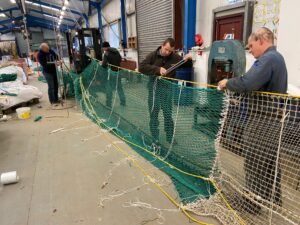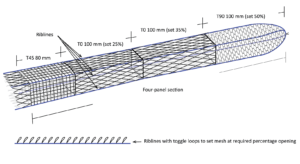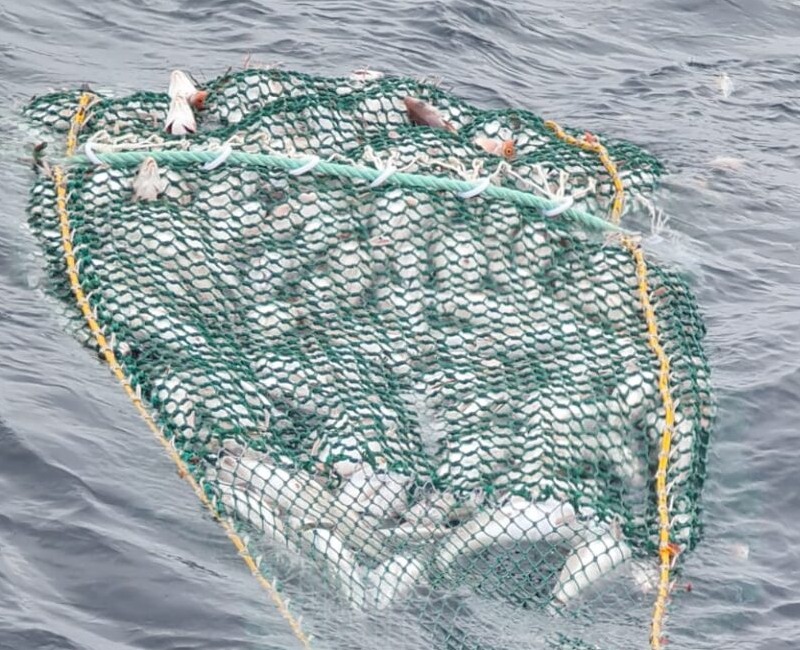
All hands on deck at Swan Net Gundry! |
Recent reports point to substantial improvements in global fish and marine life sustainability. Two papers published under the Nature portfolio of scientific journals demonstrate the benefits of steady increases in the levels of fisheries management and marine conservation interventions since the 1980s.
These measures have helped reduce overfishing and boosted recovery to the point where two thirds of large-scale commercial stocks are exploited at sustainable rates. The number of marine species at risk of extinction has decreased while populations of marine mammals such as humpback whales and several seal species have significantly increased.
While it’s a case of much done and much more to do on the latter, climate change is the “critical backdrop against which all future rebuilding efforts will play out”. Threats such as increased ocean warming, acidification, sea level rises, and ancillary impacts will need to be dealt with through effective mitigation of greenhouse gases and development of carbon capture and removal technologies. If successful, “substantial recovery of the abundance, structure and function of marine life could be achieved by 2050”.
Closer to home, the latest edition of the Marine Institute (MI) Stock book includes a positive assessment of Irish fisheries. The number of sustainably fished stocks rose from 33 in 2020 to 35 in 2021 with gradual progress towards long-term sustainable utilisation of the resource base since 2012. A variety of management measures are likely behind this progress, with increasingly high-quality scientific advice from the MI no doubt playing its part.
Gear selectivity also helps develop sustainable fisheries. As outlined in the stock book, increases in mesh size and introduction of large square-mesh panels are likely to have contributed to observed reductions in fishing mortality in some fisheries.
BIMs latest gear collaboration with Industry has further boosted the performance of the highly selective T90 codend, a key gear measure in the Celtic and Irish Seas. Previous BIM trials have demonstrated the benefits of T90 or mesh turned 90o compared to standard diamond (T0) mesh. Due to increased mesh openings, T90 consistently reduces catches of small fish. Thanks to increased water flow through the open meshes, greater quantities of larger market sized fish are swept into and retained in the codend.
Led by BIM’s Daragh Browne and teaming up with an Irish seiner and Cathal Boyle and colleagues at Swan Net Gundry (SNG), a new four-panel 100 mm T90 codend design with shortened Dyneema® ropes fixed along each of the selvedges was tested. Known as riblines or lastridge ropes, this gear modification has been trialled in Canadian and Icelandic fisheries and was successfully tailored to the Irish seine net fishery with extensive design input from SNG. The ropes are shorter than the stretched mesh length and aim to optimise mesh openings and water flow along a series of sections with different mesh sizes and orientations.
Haddock is a key target species for seiners with additional monthly quotas allocated to this fleet. Conducted on a self-sampling basis due to Covid restrictions, a comparison of the new T90 codend compared with a standard two-panel T90 codend demonstrated a 70% reduction in small grade haddock, and 157% and 133% increases in medium and large-grade haddock. Very few undersize fish occurred in either gear as expected with 100 mm T90 codends.
While price data have yet to be analysed, large haddock are worth substantially more than small haddock meaning the new gear greatly assists in maximising the value of available quota. Major reductions in small fish also reduces fishing mortality likely leading to improved sustainability of the haddock stock. Additional benefits include improved fish quality due to the stable four-panel codend shape and smaller quantities of fish lifted aboard; reduced fuel use and carbon emissions through increased catch efficiency; greater gear durability as the riblines relieve pressure on the codend meshes. It is hoped that these developments will drive further uptake of T90 codends in Irish fisheries.
The Nature papers are entitled “Identifying management actions that promote sustainable fisheries” and “Rebuilding marine life”. The MI stock book is available at www.marine.ie. BIM would like to thank the skipper and crew of the trial vessel and the team at SNG for a successful collaboration. The vessel name is excluded due to use of economic data. A full report on this work will be published on www.bim.ie/publications/fisheries in January.




